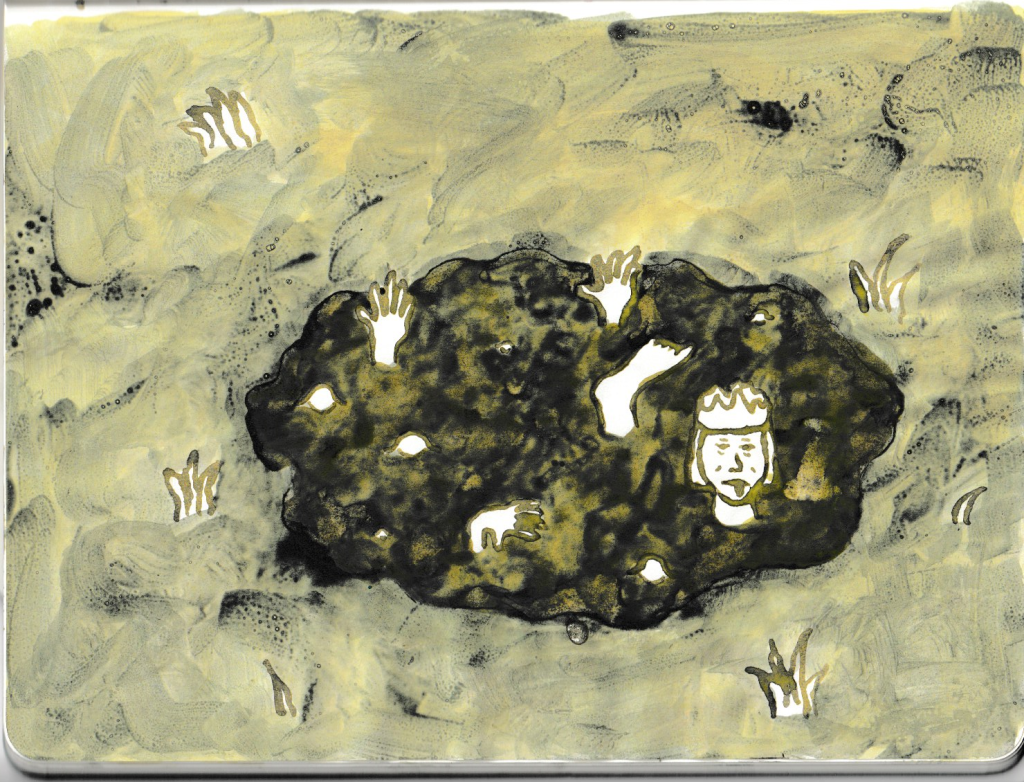
A little painting I did vibing with the 17th Century Tarot de Marseille Death card, taking it’s iconography of harvesting the dead to the site of the bog. I enjoyed making the inks as boggy as possible.
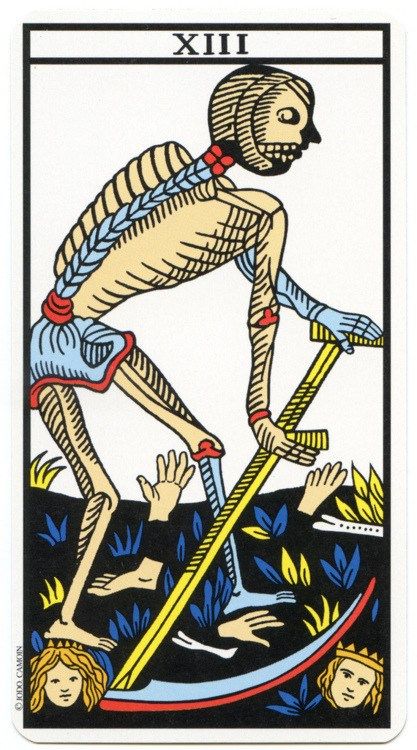

A little painting I did vibing with the 17th Century Tarot de Marseille Death card, taking it’s iconography of harvesting the dead to the site of the bog. I enjoyed making the inks as boggy as possible.

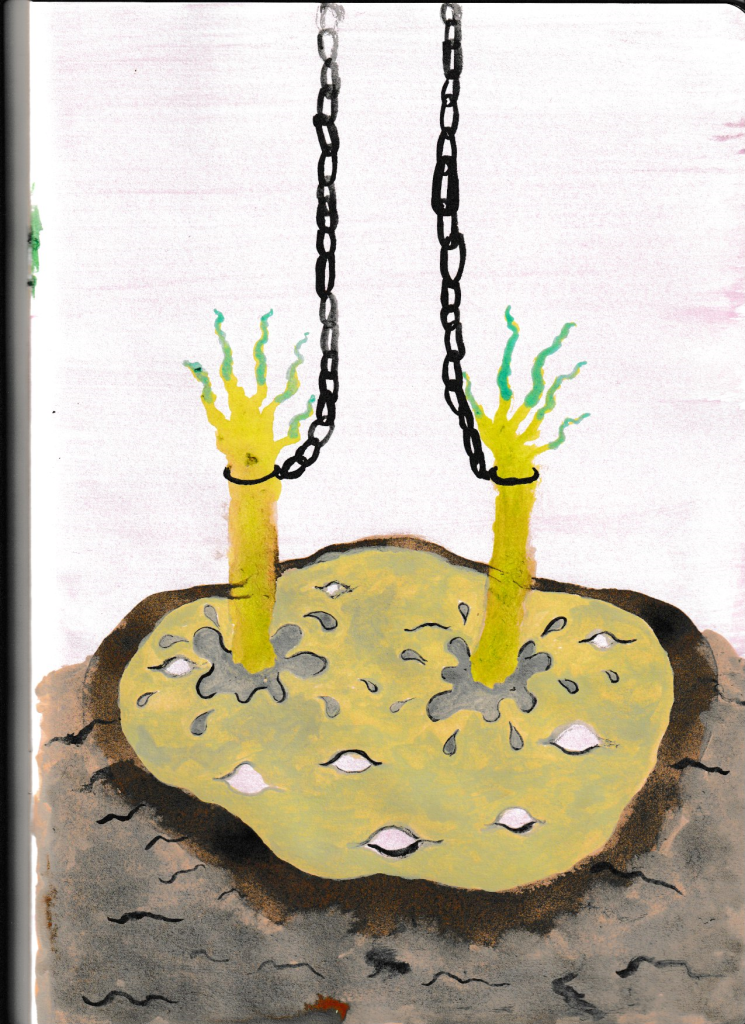
I love that phrase u sometimes hear about Halloween/Samhain: “the thinning of the veil”. From the idea of thin times it’s only a small leap to that of thin places. In Shetland witch (or heksi) folklore it is said that the stretch of sand that runs between high and low tide is the undisputed territory of the devil. Folk magic loves a threshold, a space between spaces (oh so liminal): a beach, a fog, the meeting point of two rivers, a keyhole, midnight, a crossroad. A bog. To get lost in a thick fog whilst traversing a bog might just about be the perfect setting to summon the dead. My sense is that these thin places and times are potent precisely because they can function as temporary sanctuaries, a home for those pushed to the margins. Not unlike Doom Patrol’s Danny The Street (DC Universe/HBO) a roving sentient genderqueer street that goes where it’s needed and provides a home to for us misfits.
I took a break last week and dissapeared to the country side, it was magical mostly because i had very limited internet access. there was a lot of cows, rhubarb and ants (so, so , so many ants)
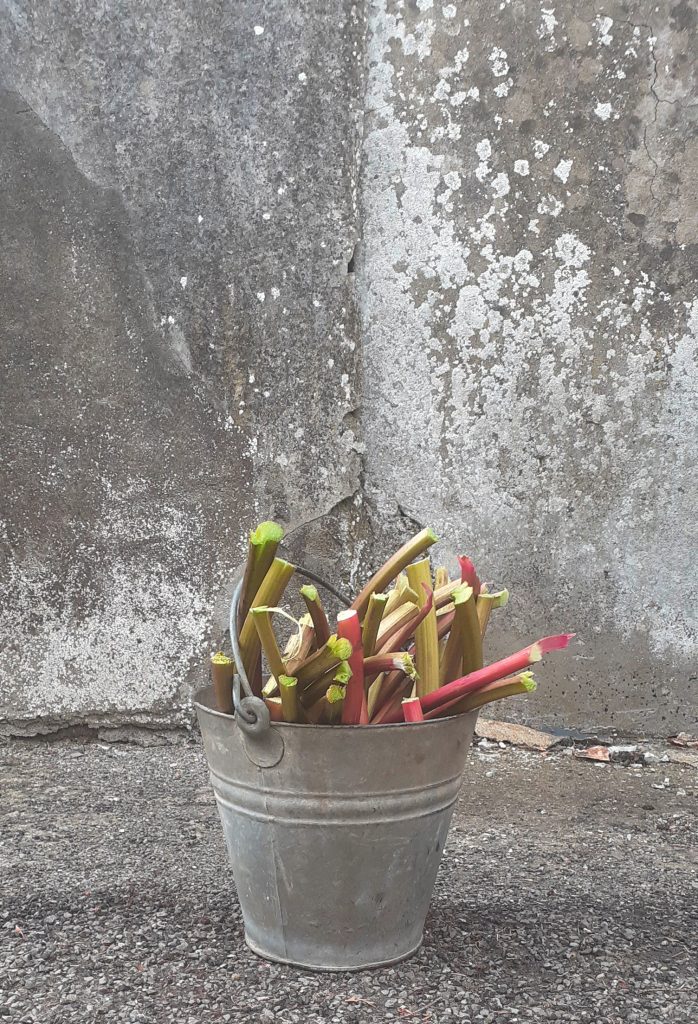
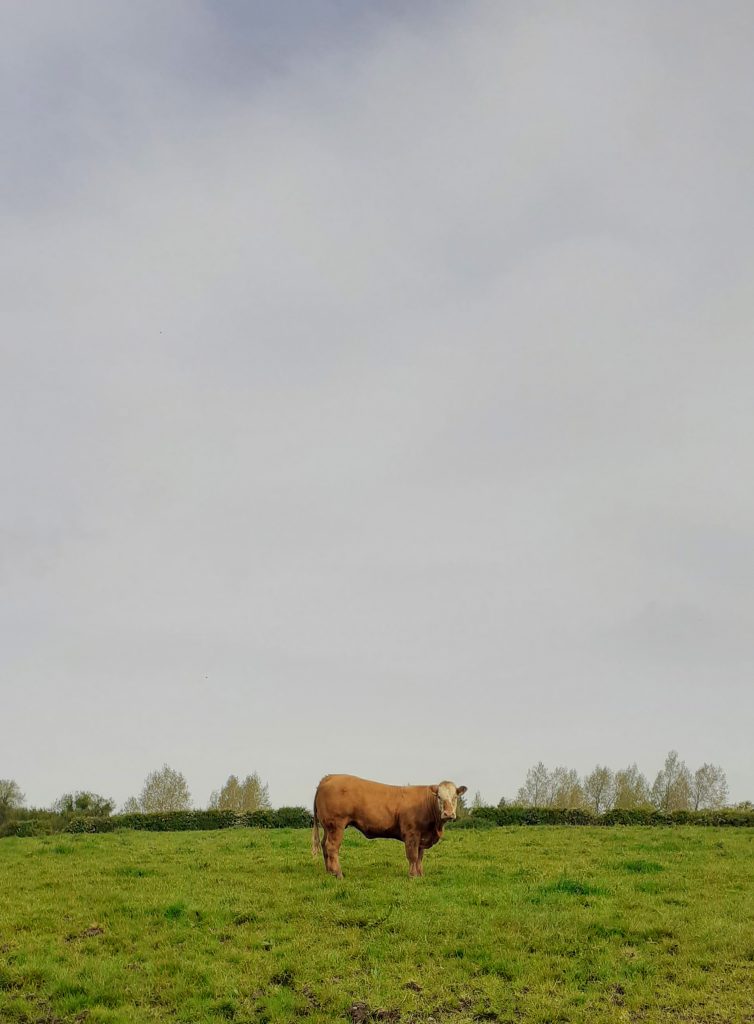
It really made me slow down and in that process I returned to drawing and watercolours. I finished a major project in November last year and havnt stopped since, so it was nice to decelerate and return to a more normal pace of life 🙂 :), Ill post some of the watercolours soon.
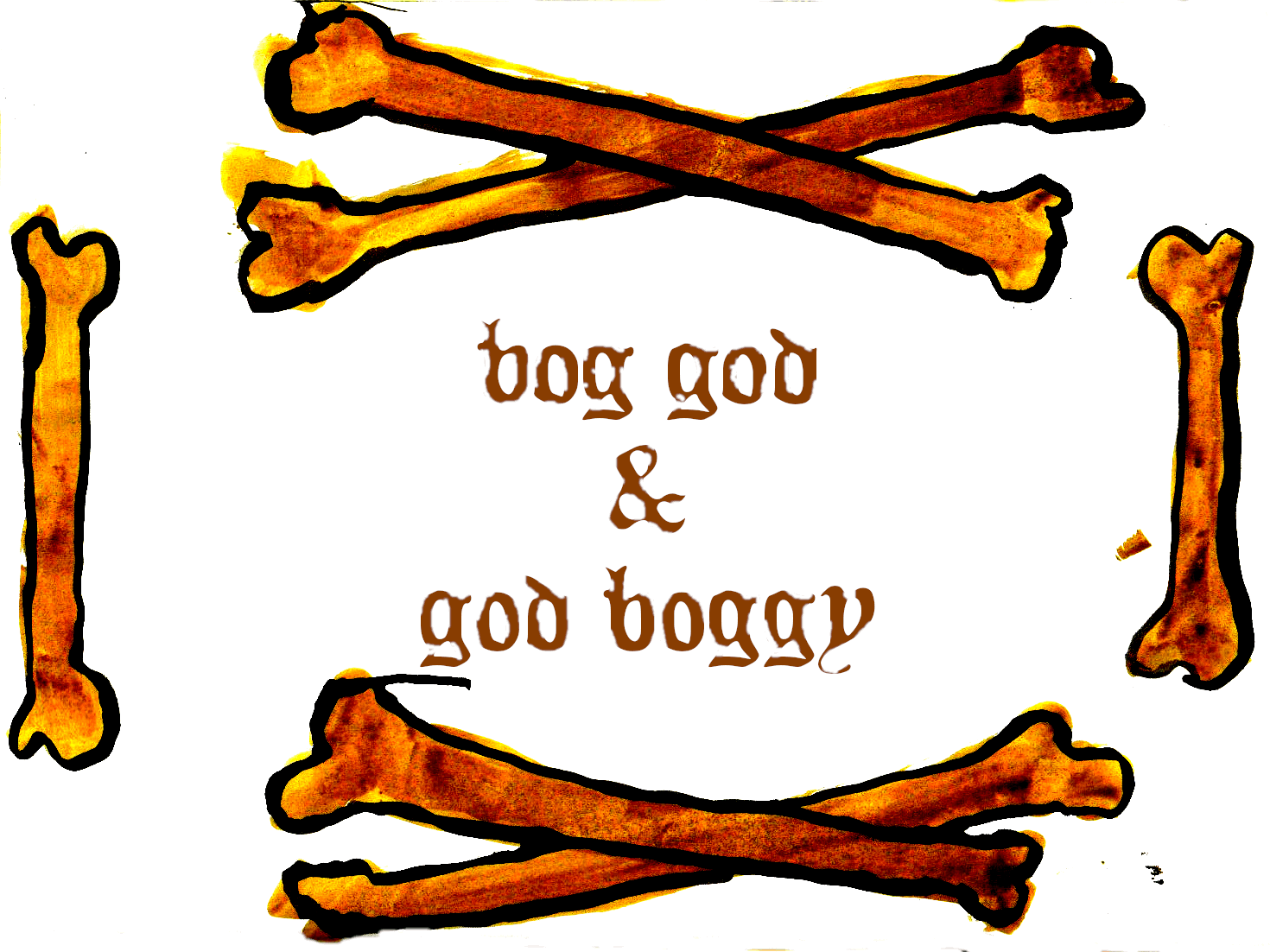
I was just in Cambridgeshire, spending a week at Wysing Arts Centre. This was a huge amount of fun, and I’ve got a lot to reflect on from my time there that I plan on writing about here. But, one of the things I was really intrigued by (and had a great chat around with Rosie Cooper, Wysing’s director) was the history of the fenlands in the East of England. Now, this is something I am by no means an expert on, but it struck me as interesting to be in a famously dry part of the country, but up until the 16/17th Century was predominantly an area of wetland known as The Fens. Some amazing things came from the fen drainage, in terms of making the area incredibly fertile ground for food production (the East of England produces around a third of Britain’s fresh vegetables). But also, a huge amount of things were lost, with the drying peat soil releasing millions of tons of CO2, and with sea levels rising this area is incredibly vulnerable to flooding. Also, there’s something here about ‘productivity’, about fen drainage as an immensely violent process of enforcing anthropocentrism on the land, and it’s peoples (something that was fiercely fought against by the Fen Tigers in an inspiring period of history of working class guerrilla warfare). This idea of inefficiency is one I feel a strong sense of (admittedly ambivalent) kinship with. I often feel lazy, which I know is my own internal able-ism, but this makes it no less hard to battle with. Still, I persist to be at peace with the pace of my own rhythms, no matter their own circuitous and non-linear patterns of productivity.
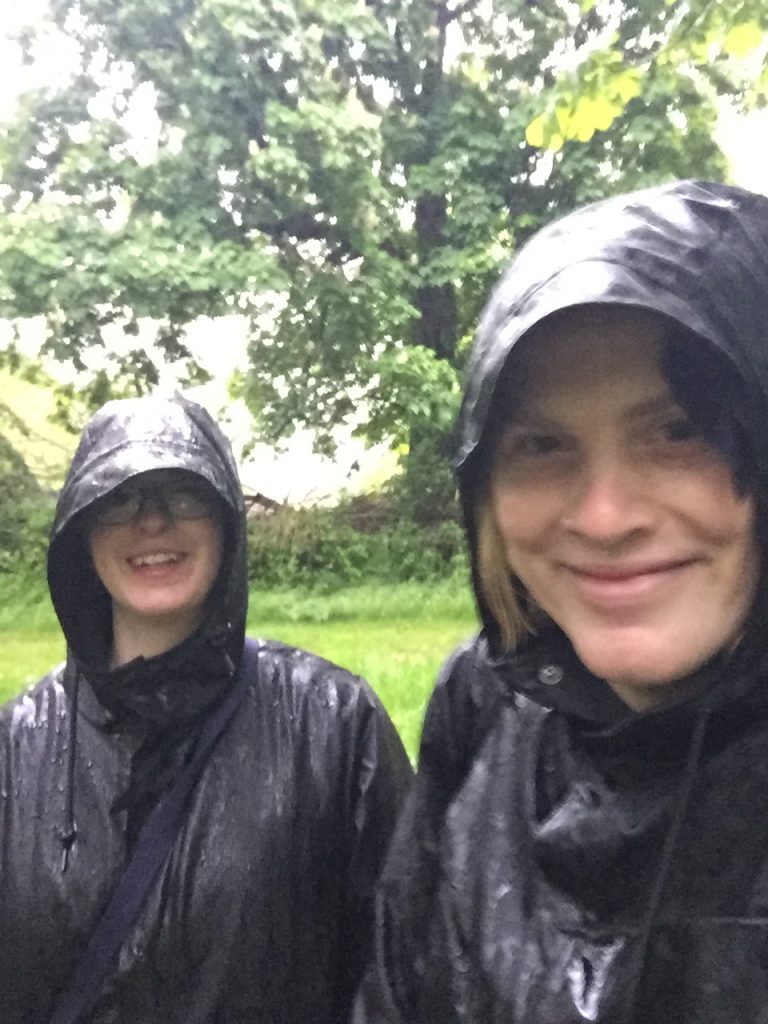
On the first day at Wysing we went for a walk through the woods to the local shop, where we got drenched in rain as lightning and thunder crashed about above our heads. Brief expulsive rain storms happened proceeded to happen pretty much every evening we were there too. It felt kinda like the wetlands were trying to claw their way back to the soil by tooth and nail. And with rising sea-levels, it seems certain the East of England’s rich arid grave of bogs past will return to wet.
So I’m now thinking back on my past obsession with depicting moments of spillage, which were always ways for me to talk about grief and the impossibility of controlling it. Grief as almost being definitionally a thing that exceeds all attempts to bracket it off, a thing that whether you like it or not will bleed out into every part of your life, colouring all.
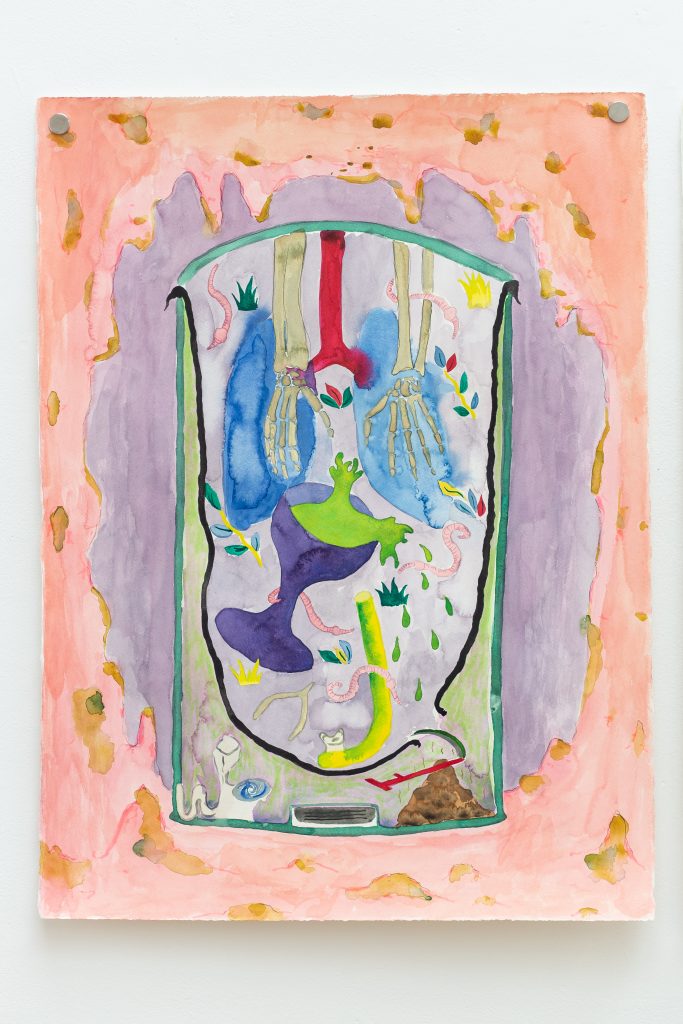
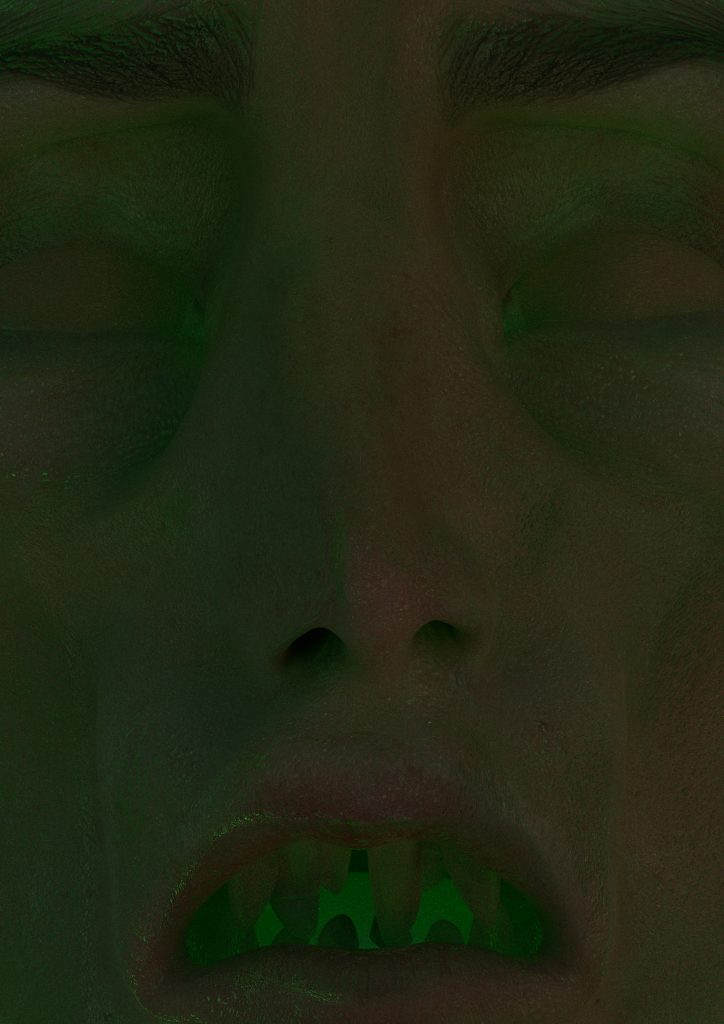
today i have been developing a character that could represent chaos, Chaos is often personified as female within mythology, and usually defined as the anarchic mix of elements that existed in the Universe. Being born of no mother, father or matter – chaos is self-knowing about everything that happens in the Universe and beyond every moment and is ”omnipotent’’.
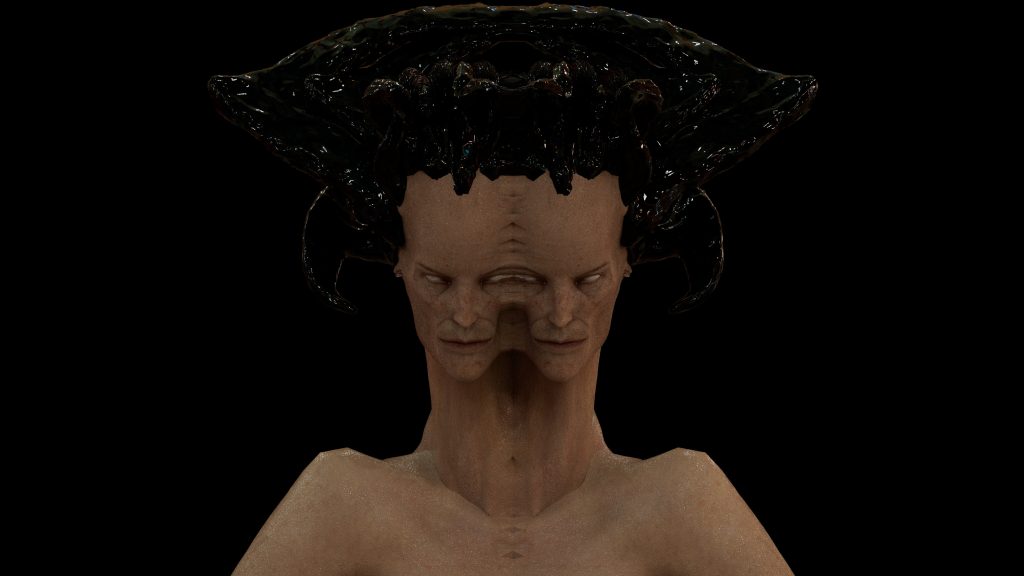
I am thinking that in the film the character can be splitting and morphing, i have experimented with this in previous works, but now rather than being a distortion i want to imagine how chaos can take shape in a bodily form 🙂
And i have also been creating some characters that blur representations of mythological figures
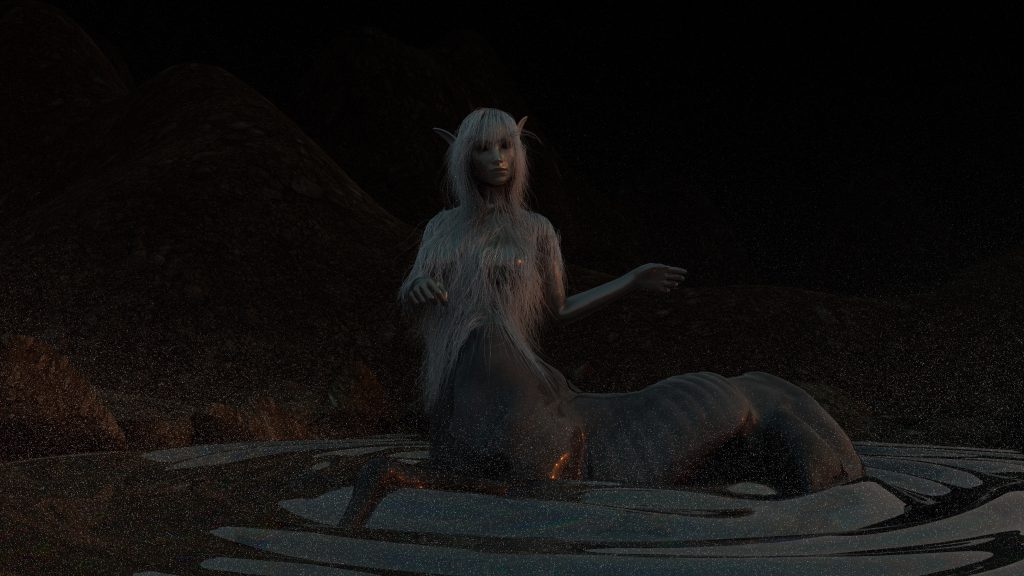
this was an experiment with a centaur figure, me and jennifer have always loved using a horses in our work and with this work we are interested in blurring the line between human and animal.
a way to think about death and decomposition when it comes to 3D models. digital flys cover the bodies but they show no sign of decay, seemingly staying animated beyond their death
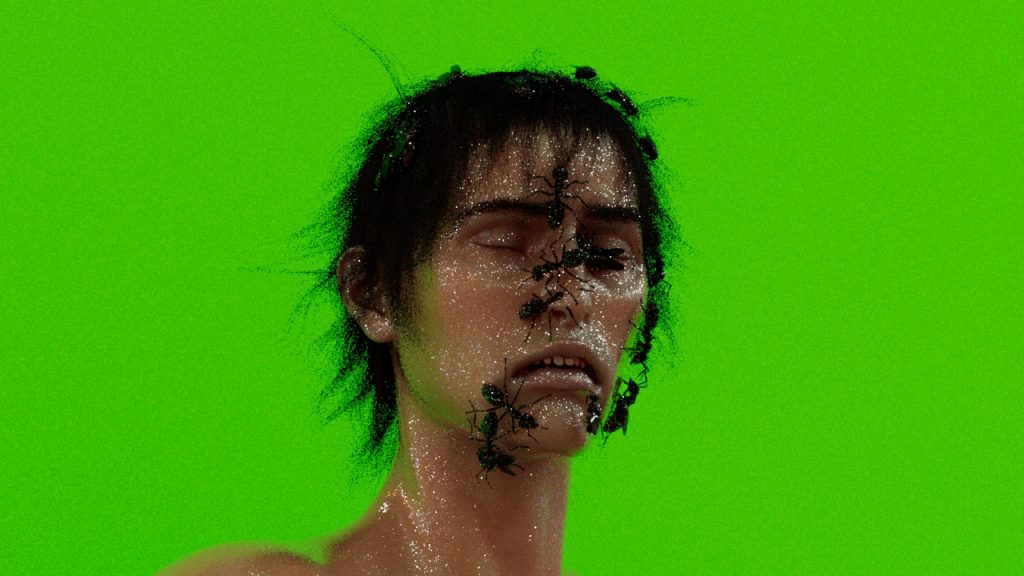
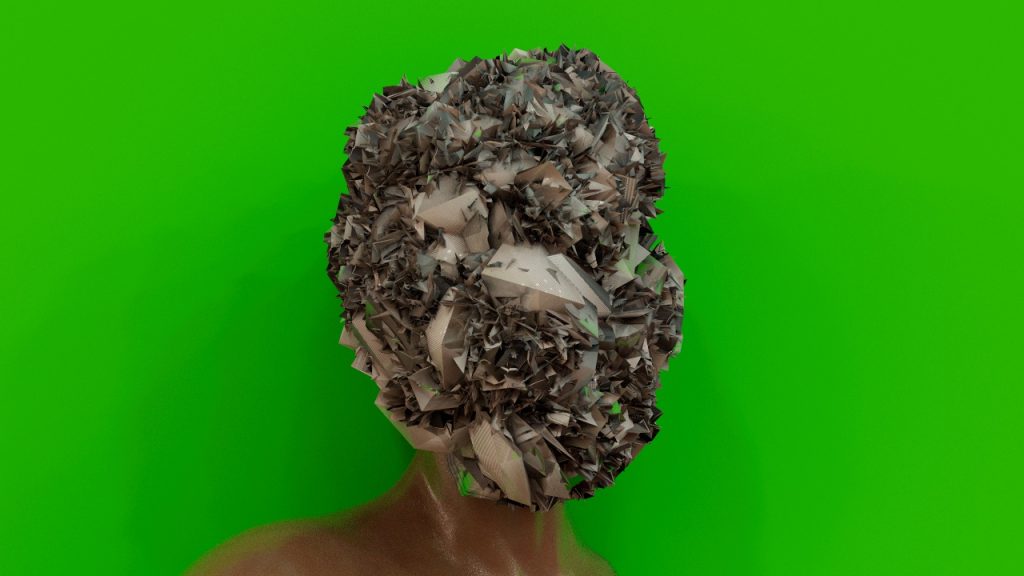
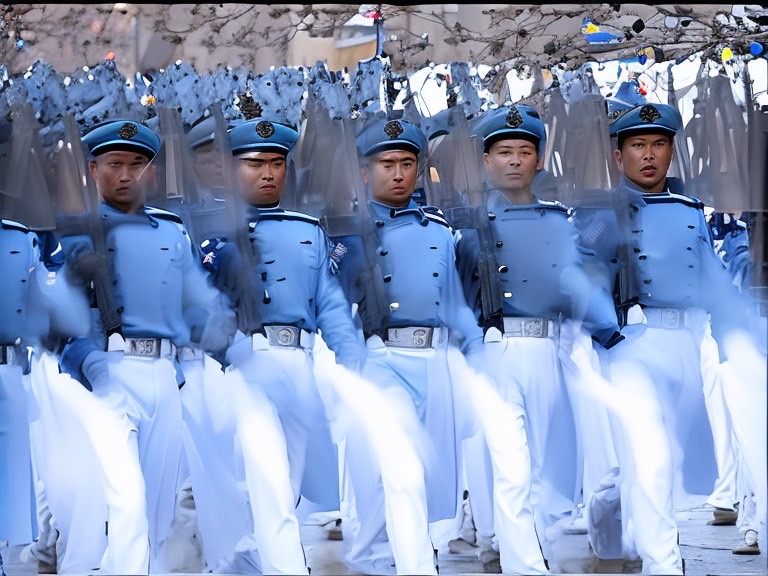
2021
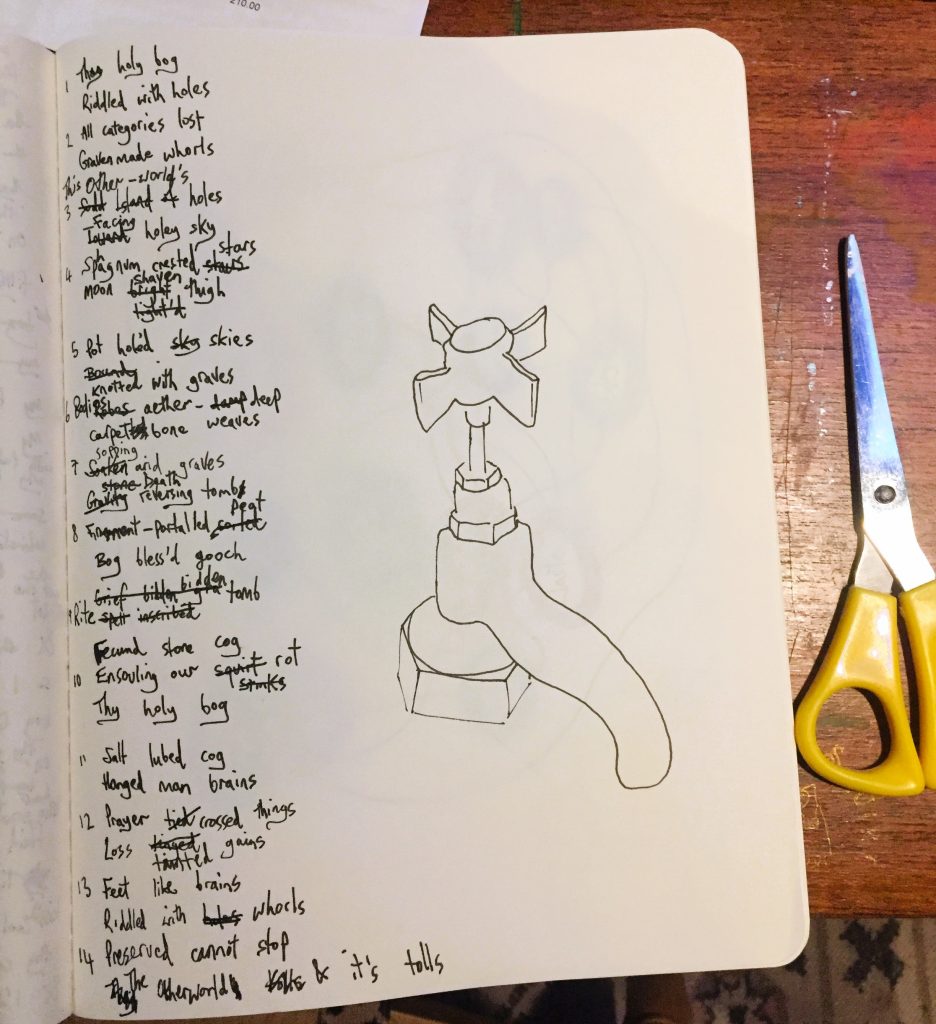
My first stab at an actual, proper, real, official, legit fourteen-lined sonnet. And it just so happens to be bog-themed. I wrote this in response to my friend Rabindranath Bhose’s work, who is currently working on a boggy solo-show which will be opening this June at Collective Gallery, in Edinburgh. Rabi and his boyfriend, Oren (who is also a super interesting artist), came to stay with us in Shetland a month or so ago. We visited lots of bogs together (including the site where the Gunnister Man was found, about a 15 minute drive from our house here), and I owe a lot of my current, reinvigorated, love of bog-lands to their visit.
So, the bog sonnet. This is where I’m up to with the edit so far (though it’s still very much a work in progress, so go easy on me!):
Thy holy bog / Riddled with holes
All categories stray / Graven made whorls
Other-World’s holes / Face holy sky
Sphagnum crusty stars / Moon shaven thigh
Pot holed skies / Knotted with graves
Bodies aether-deep / Carpet bone weaves
Sopping arid graves / Death reversed tomb
Firmament portalled peat / Bog bless’d gooch
Rite bidden tomb / Fecund stone cog
Ensouling our rot / Thy holy bog
Salt lubes cog / Hanged Man brains
Prayer crossed things / Loss borne gain
Feet like brains / Riddled with whorls
Preserved can’t stop / Other-World tolls
2022
One of the installation works in project (Obstacles)
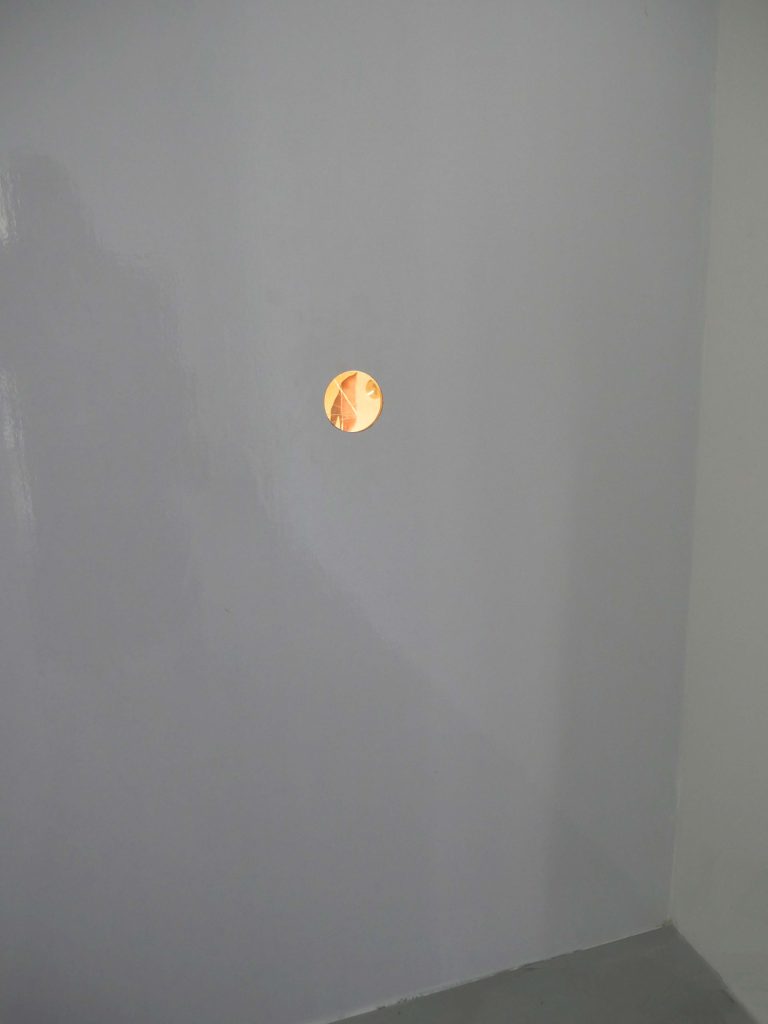
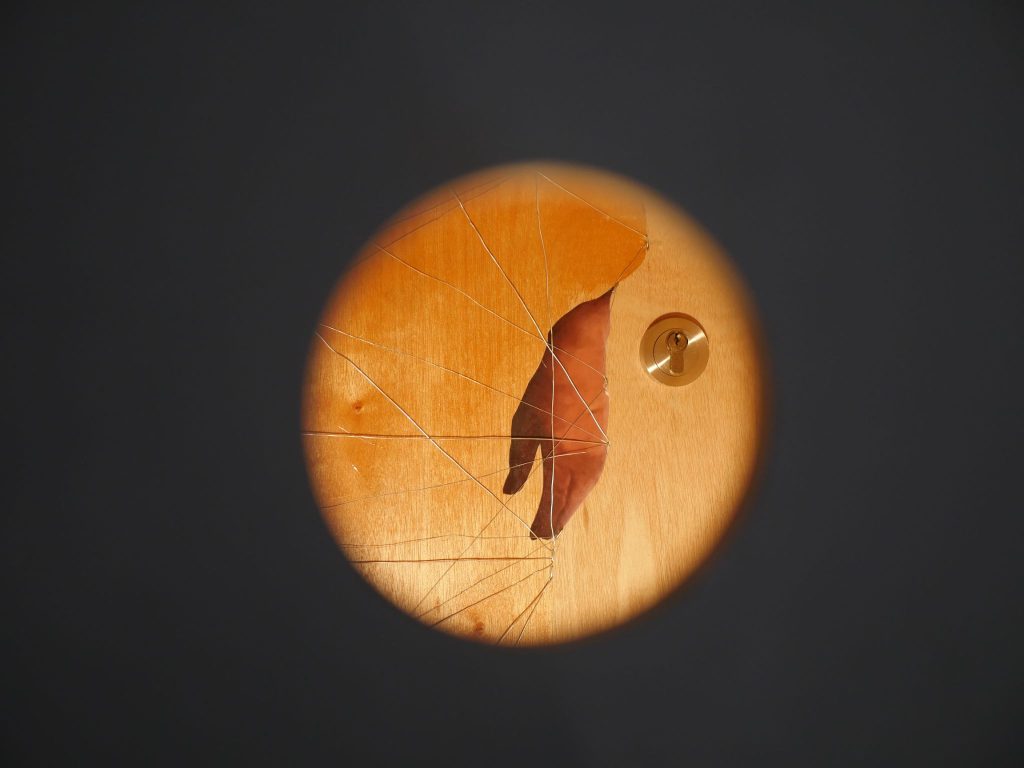
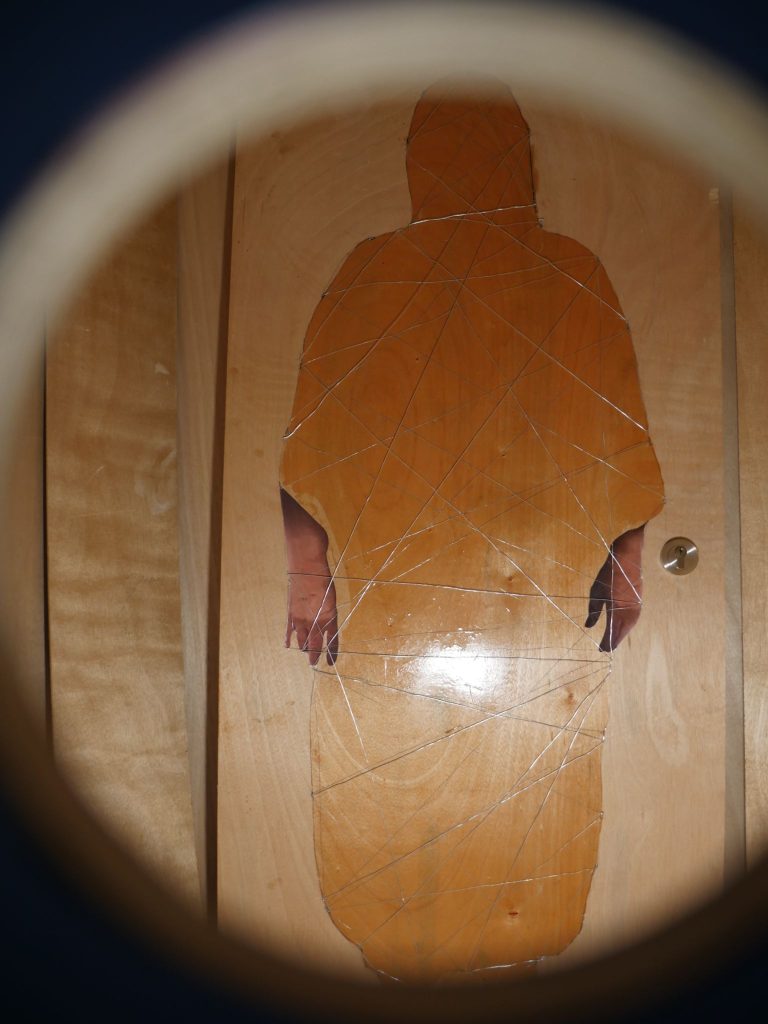
2022
One of the installation works in project (Obstacles)
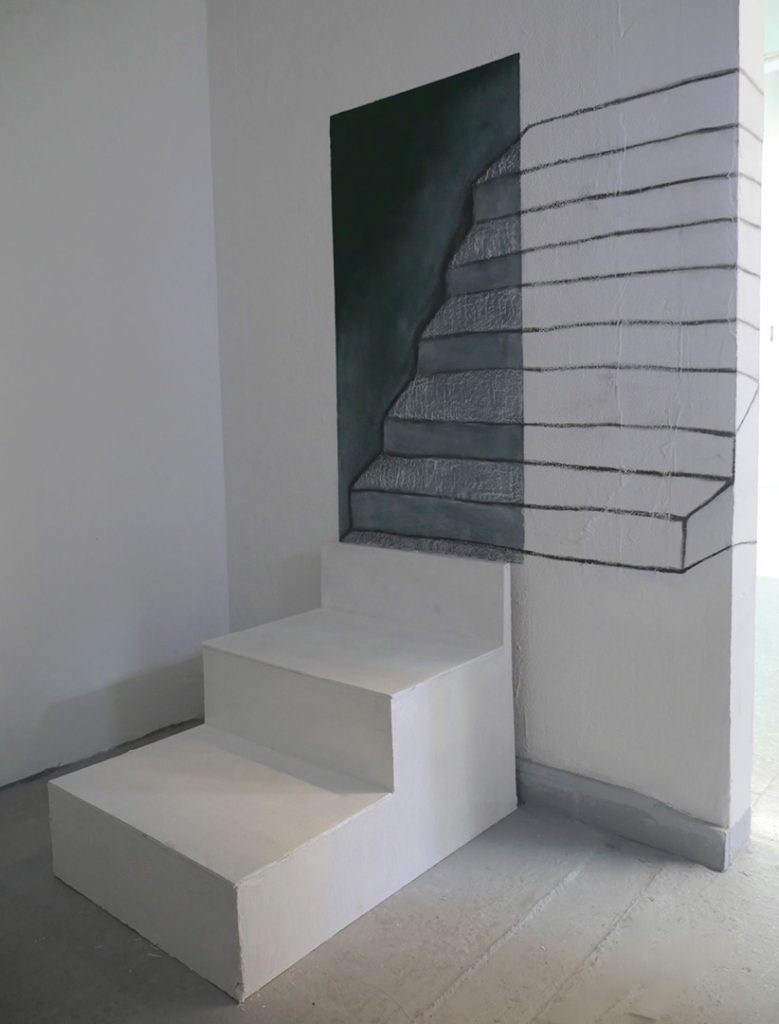
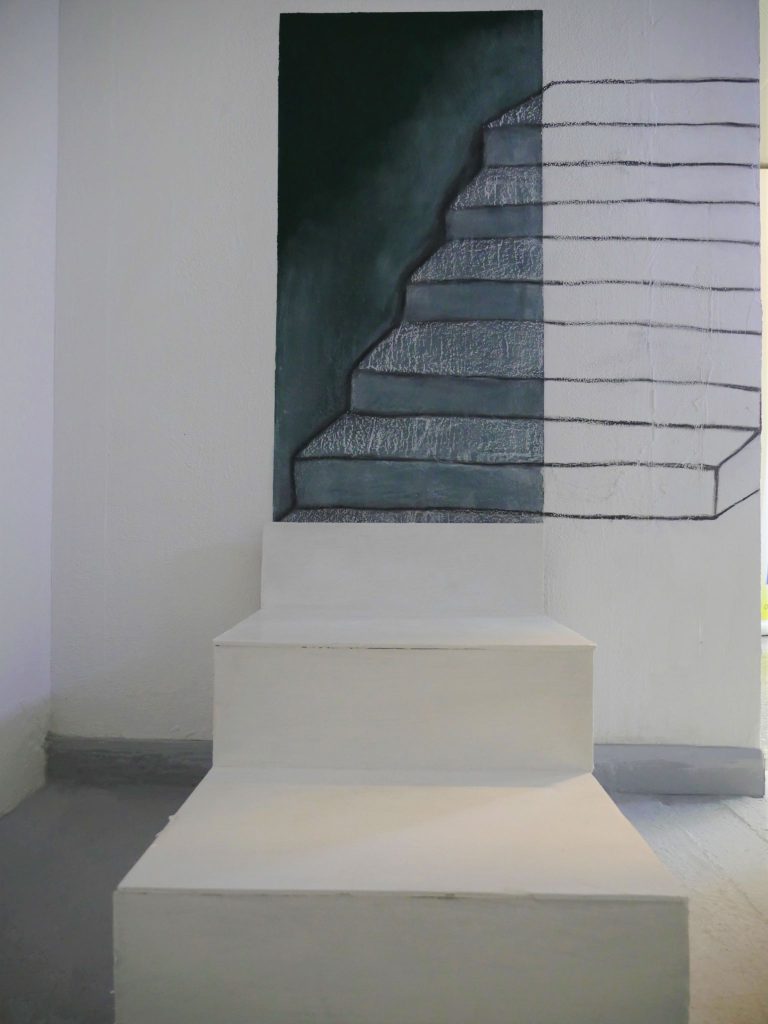
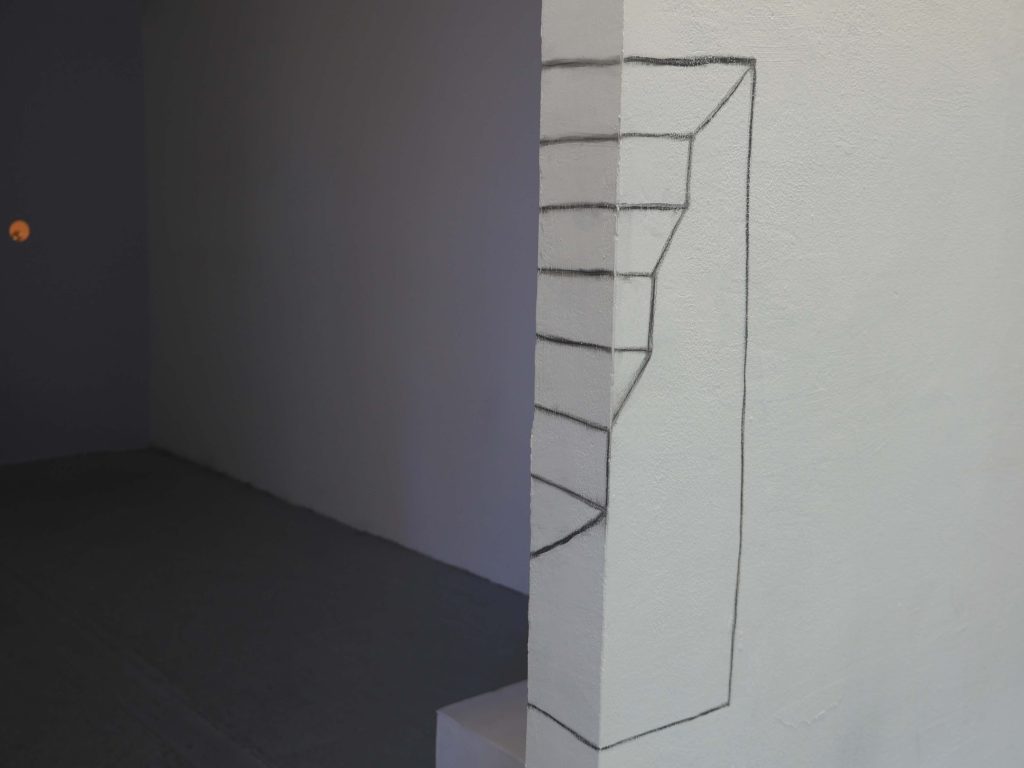

Video art
2022
Third element of project (Obstacles)
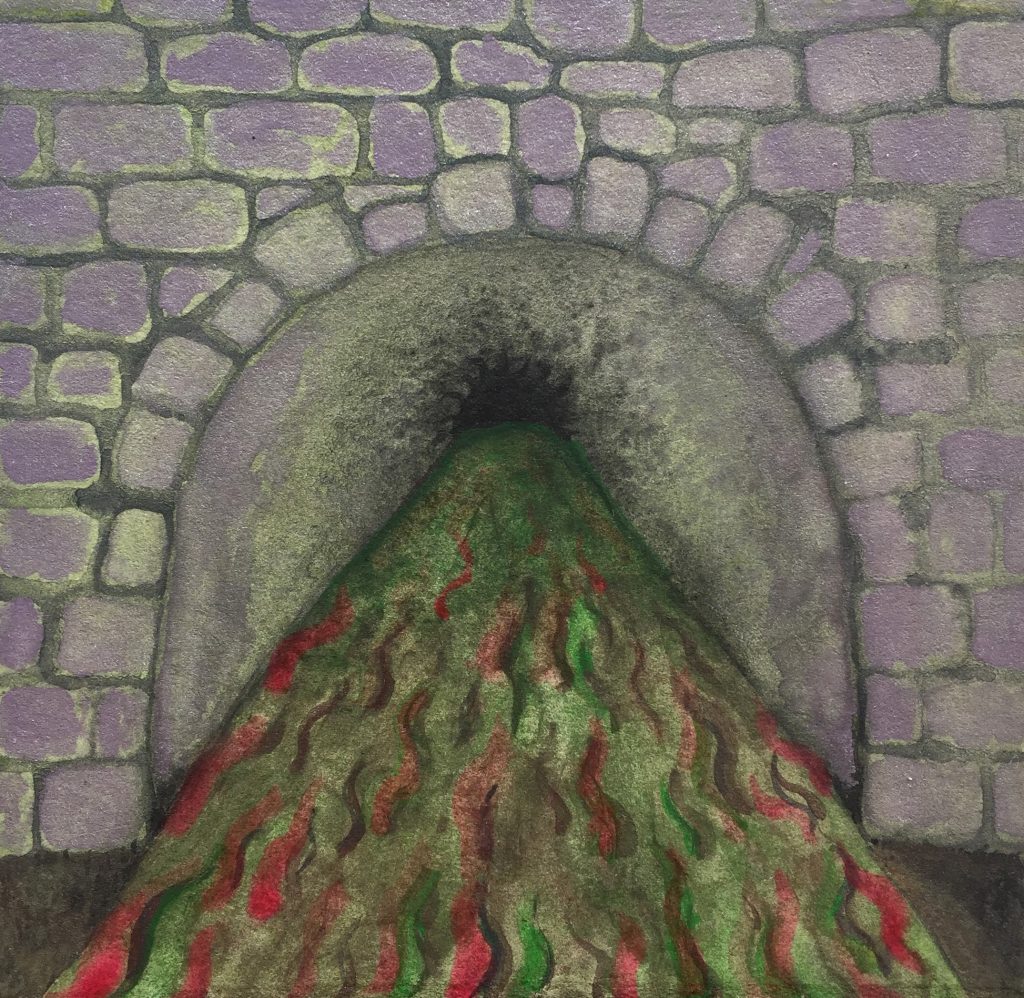
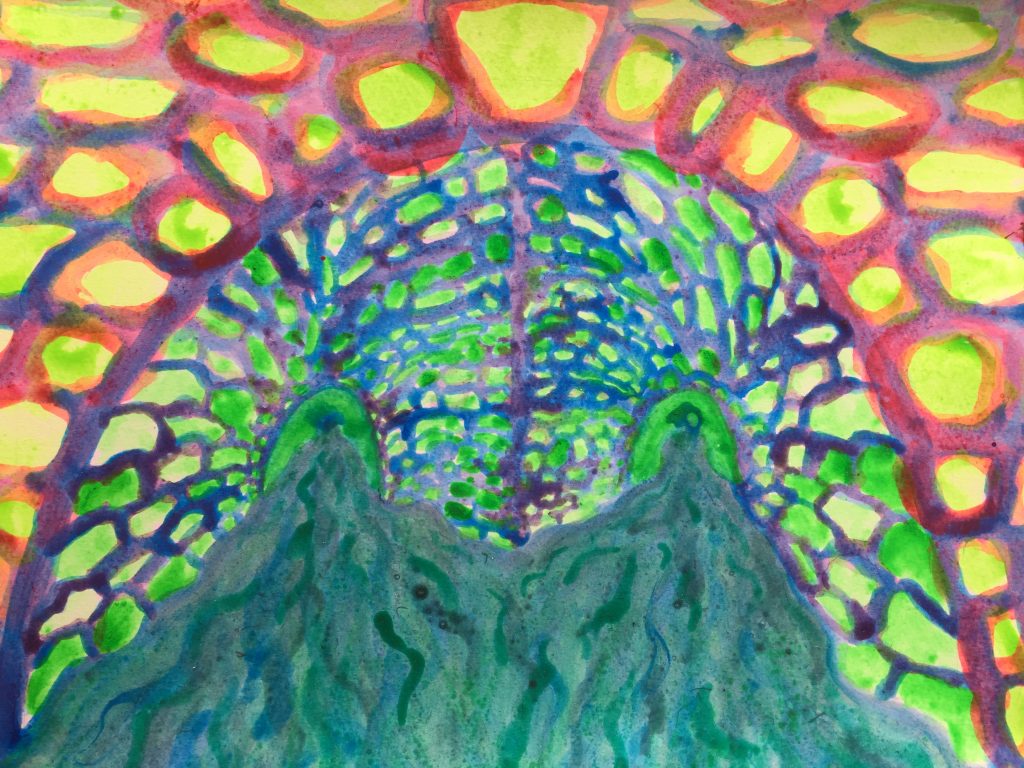
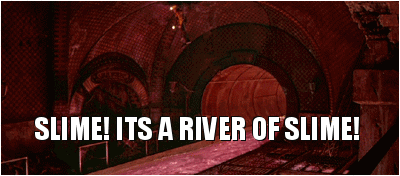
Beneath the streets of Rome lies the Cloaca Maxima (‘The Great Drain’), one of the worlds earliest sewage systems (named after the Etruscan deity Cloacina, a goddess of purity and filth). Pliny The Elder called Rome a “hanging city”, referring to the rivers churning beneath it through the Cloaca Maxima’s depths. It seems this feat of engineering was considered much more than merely a place to dispose of the city’s waste, but was a numinous and mysterious site, a literalisation of the city’s Underworld.
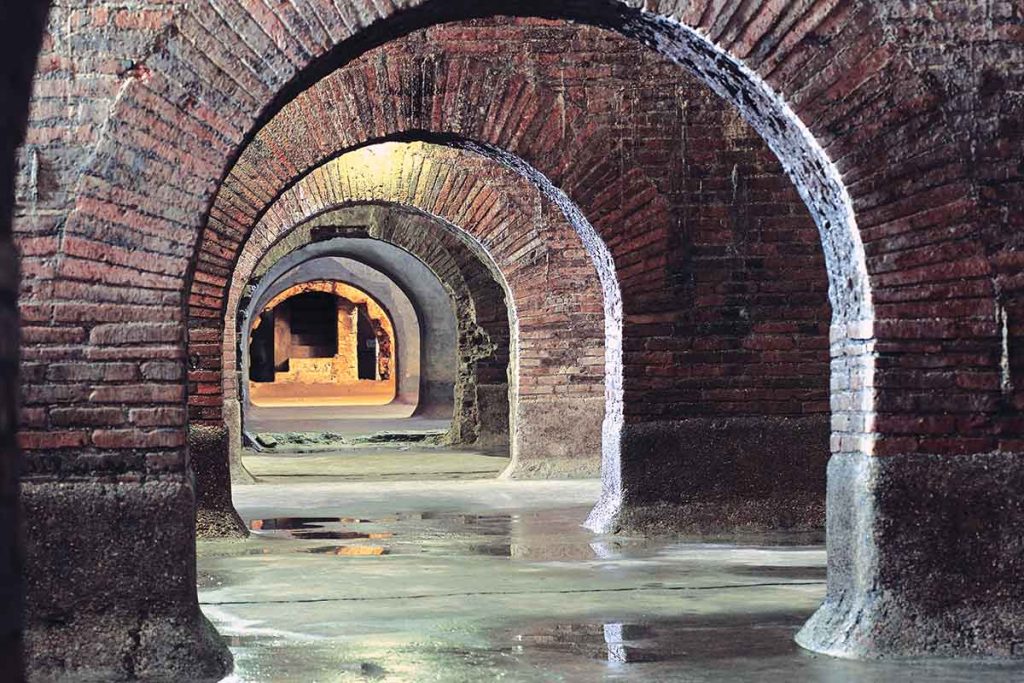
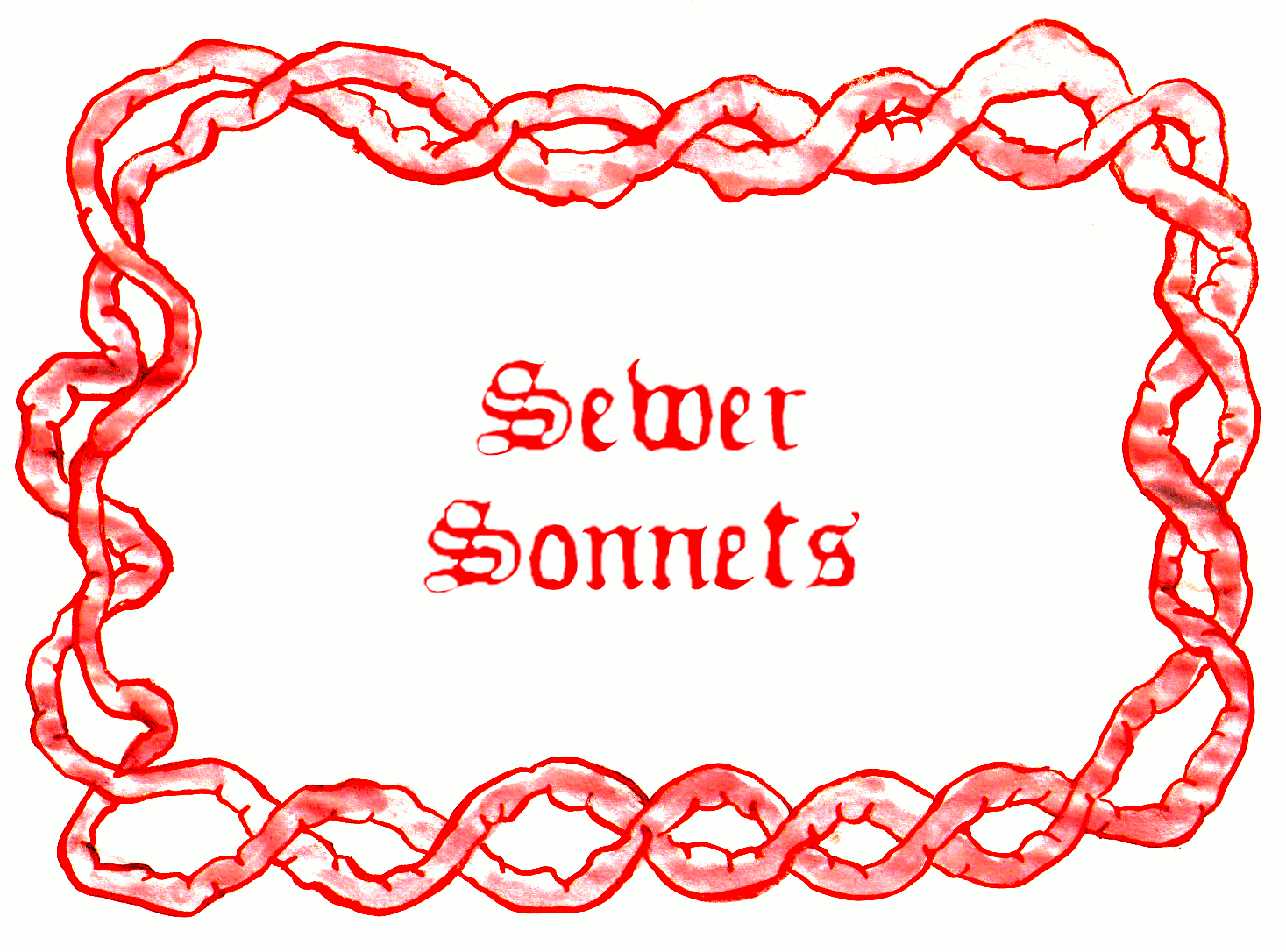
This is a kind of mock-up of something that’s been floating around my head for a minute. I’ve been crushing on illuminated manuscripts recently (particularly the 9th Century Christian Gospel manuscript The Book of Kells), and have been thinking about how to do a similar thing for a text-based adventure game (for example, here’s one I made earlier – I have no idea what the new game will be yet, but I’m trying to be ok with working in the dark about that and just following my guts). So this is it, an animated border for a game to come.
For over 5 years now whenever I start a new painting or drawing, before I put anything else down on paper, I draw some guts. It feels like they should be the foundation from which everything else is built on top of. The image of guts have become a stand-in for me that speaks to eating, digestion, shit, waste, and desire. So it feels appropriate for this to be one of the first things I make as part of the residency.
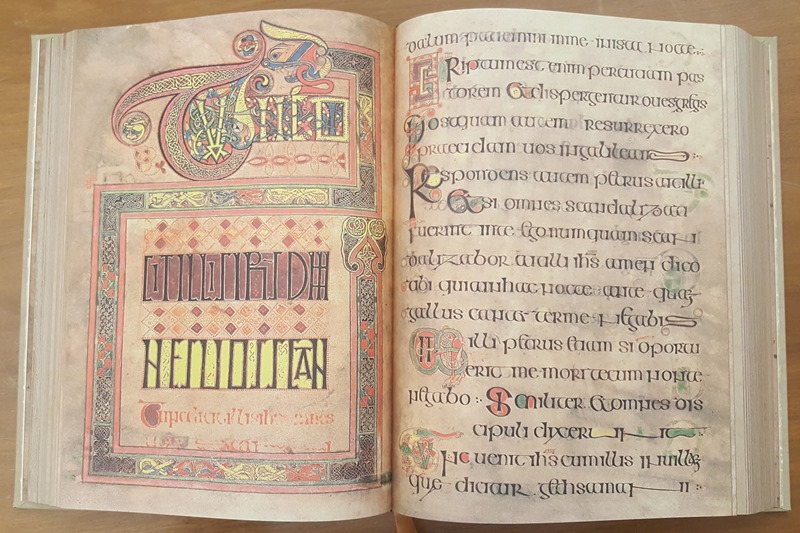
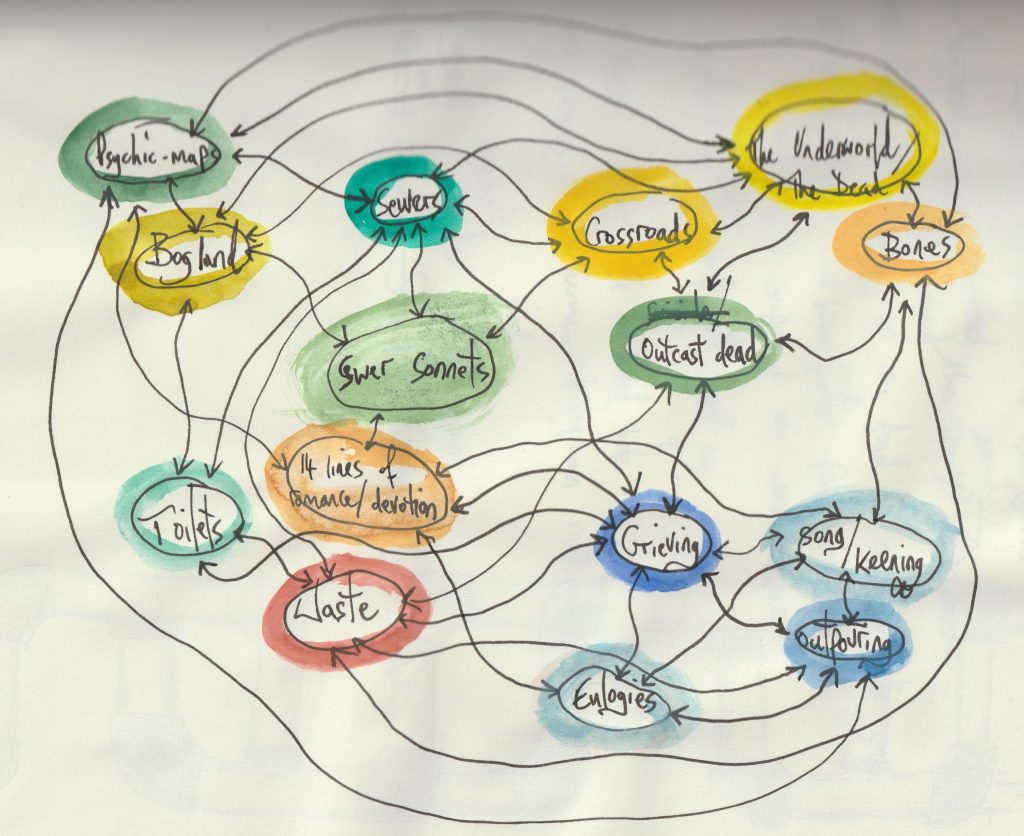
The first thing I do whenever I start a new project is draw a mind map or diagram as I find it to be a super useful way of getting a sense of where I want the work to go. And so, this is a mind map of interests I’m aiming myself towards for the Vital Capacities residency.
Looking back over it, there’s one glaring absence in this map: cannibalism. I just watched the TV show Hannibal, and am low-key obsessed (and probably permanently tainted) by it’s very gay tale of aching desire and the high aesthetics of anthropophagi (or human-eaters). To my mind, cannibalism connects nicely into the above mess of interests. There is a beautiful Buddhist food offering my girlfriend taught me, composed by Roshi Joan Halifax: “Earth, water, fire, air, and space combine to make this food. Numberless beings gave their lives and labors that we may eat. May we be nourished that we may nourish life.” Food always carries the dead with it. Of course, Hannibal accelerates his victims proximity to their death, and a number of times refers to them as no better than factory farmed livestock, so I’m not sure ‘ethics’ are high on his agenda, so much as aesthetics.
I love finding a title for a new body of work, it feels super freeing to have a banner, ‘SEWER SONNETS’, under which all sorts of ephemera can be connected and begin communicating with each other. I am really interested in how sonnets are this weirdly specific poetic form (traditionally it is a poem composed of 14 lines in iambic pentameter) that has emerged as THE genre of love poetry, and potentially even more specifically as the ultimate genre for dead lovers’ poetry.
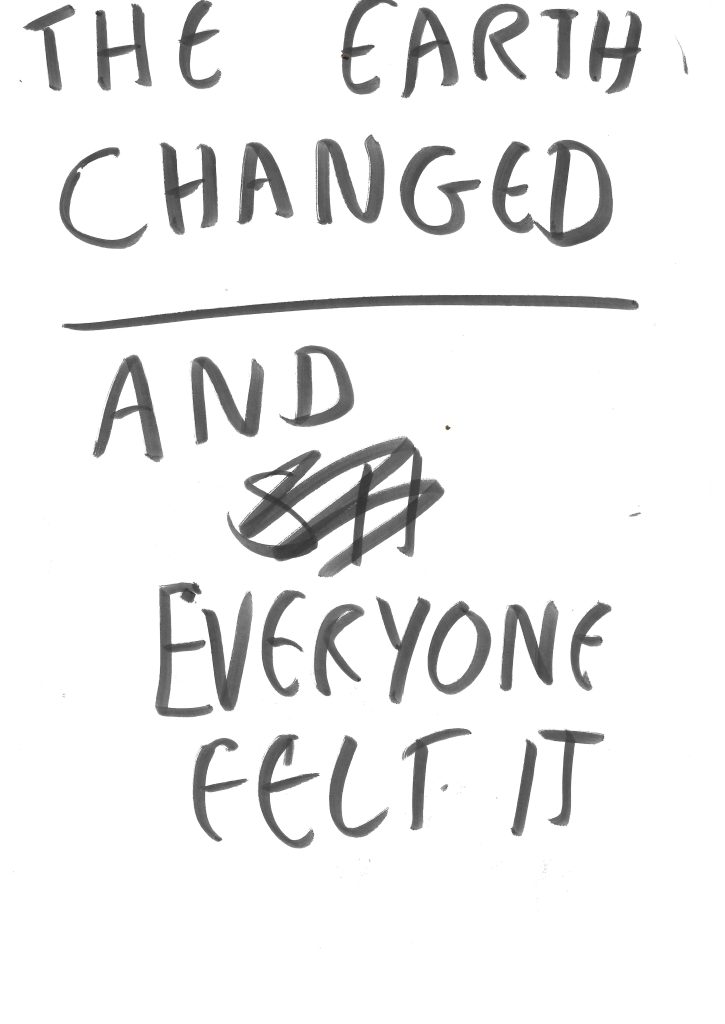
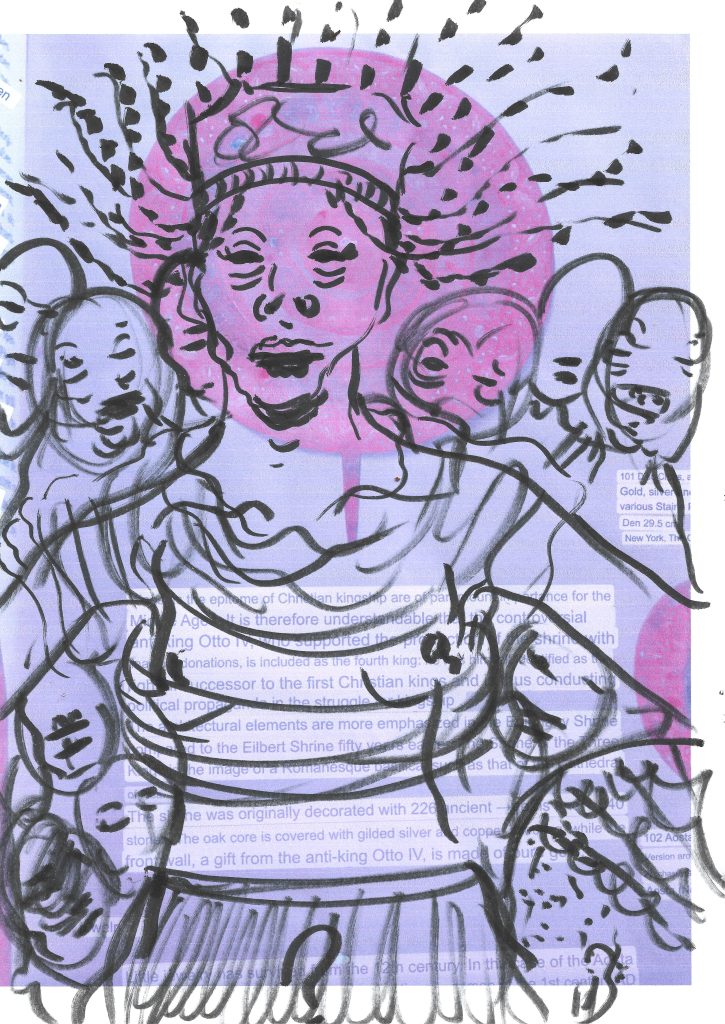
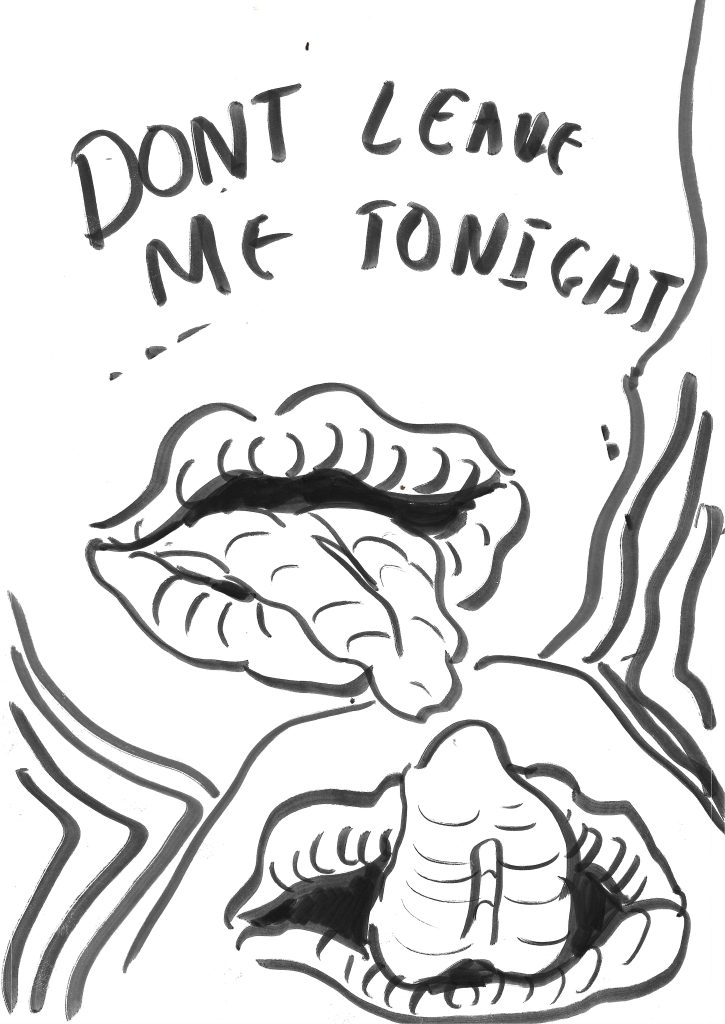
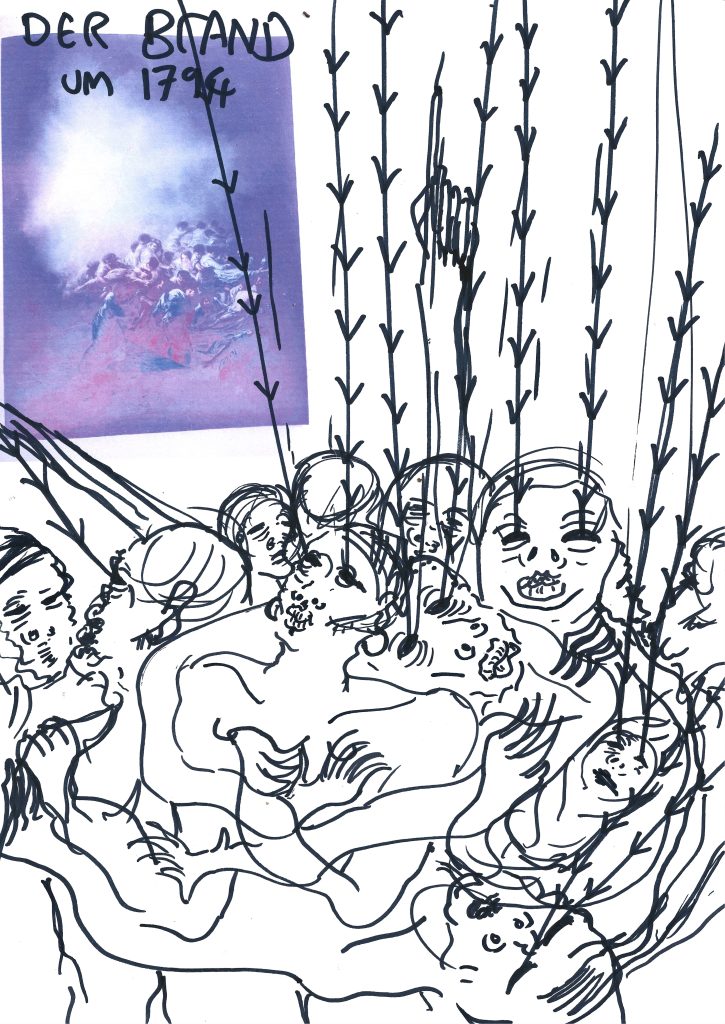
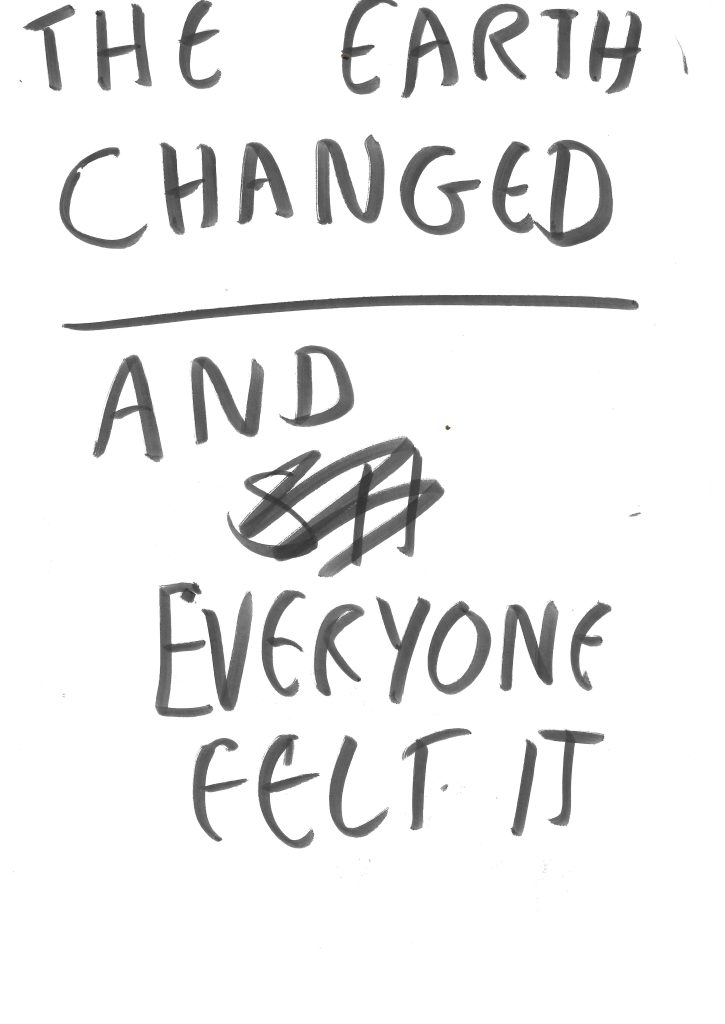
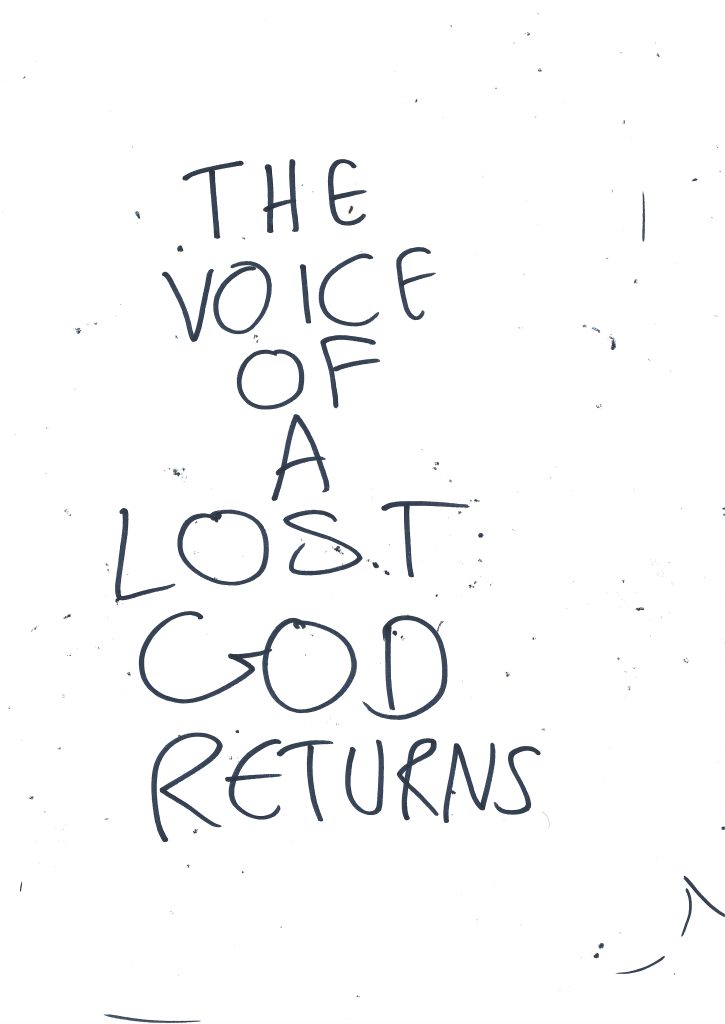
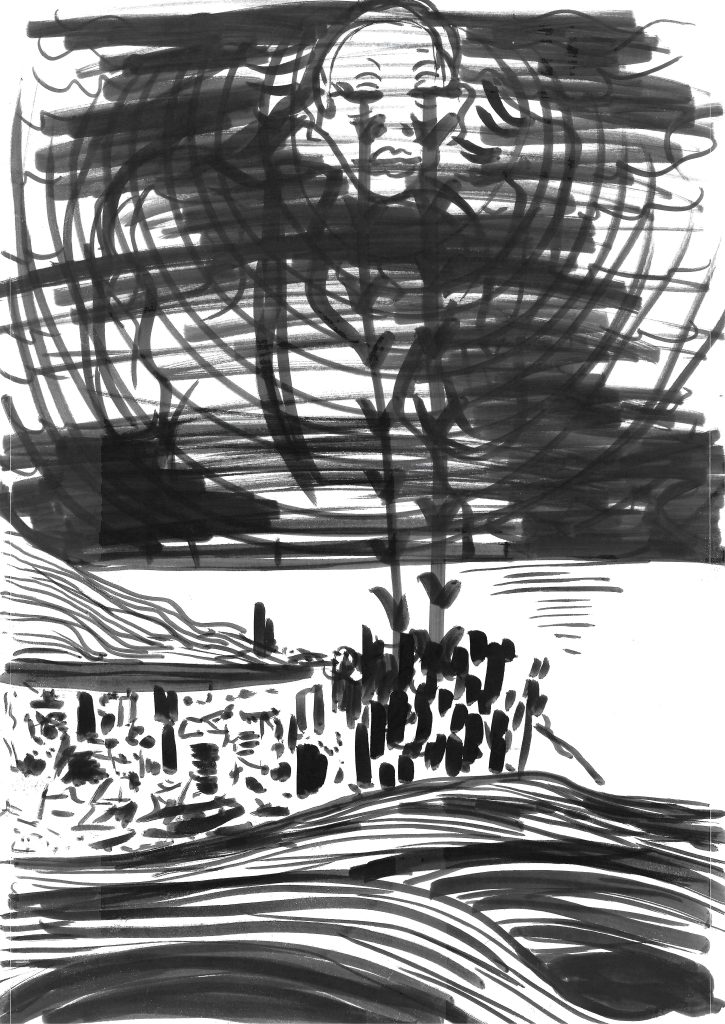
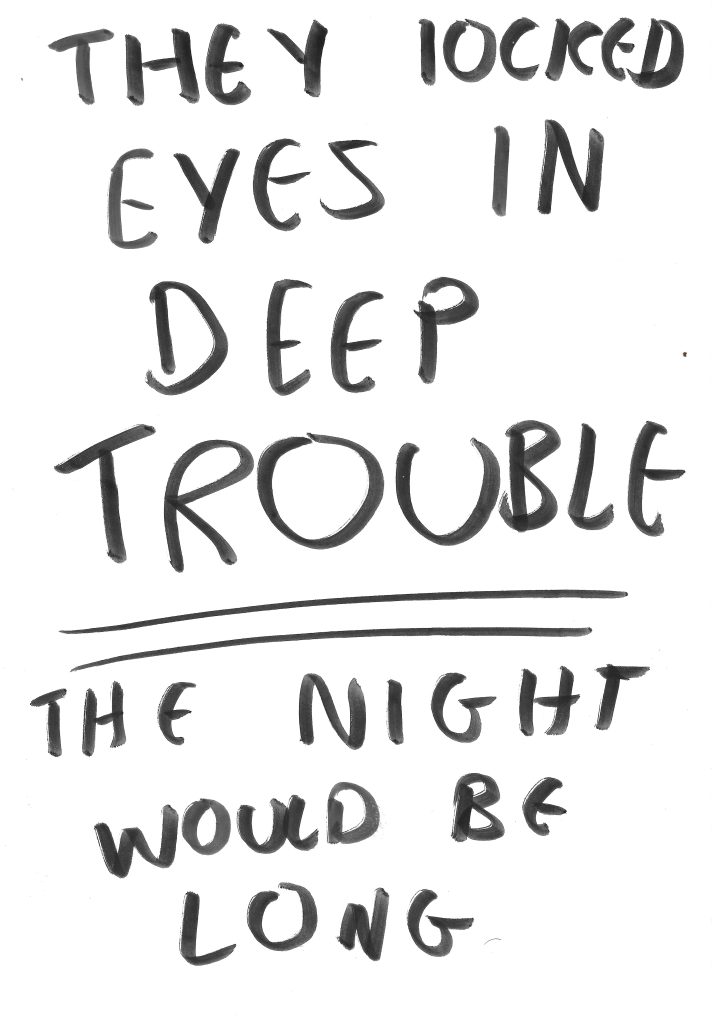
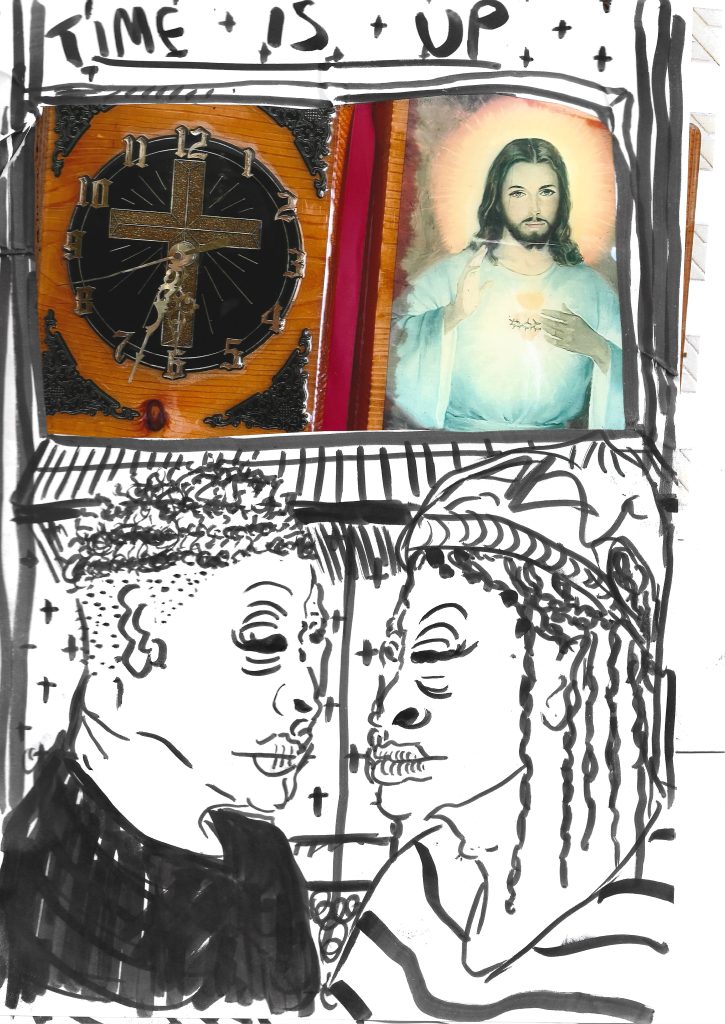
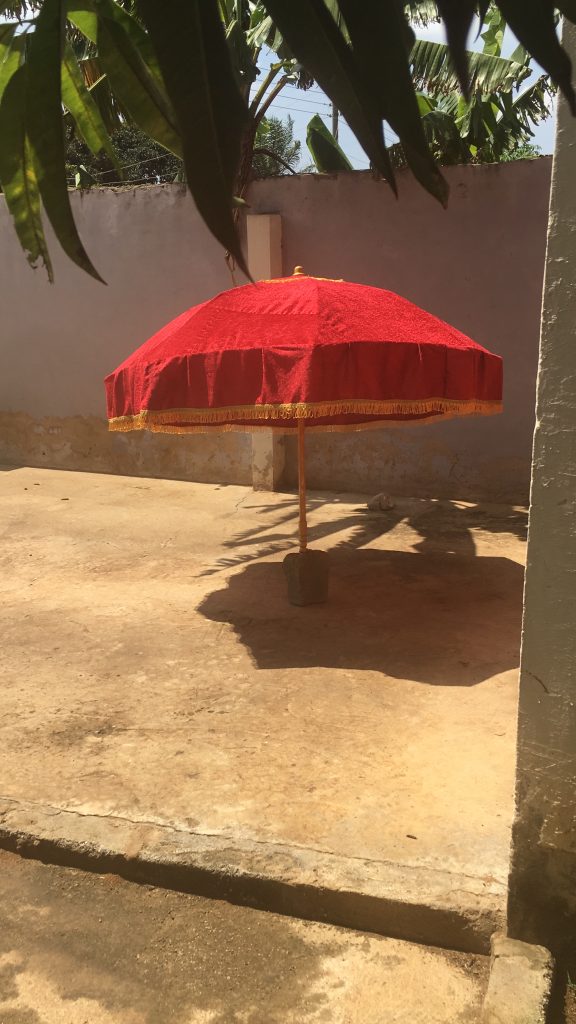
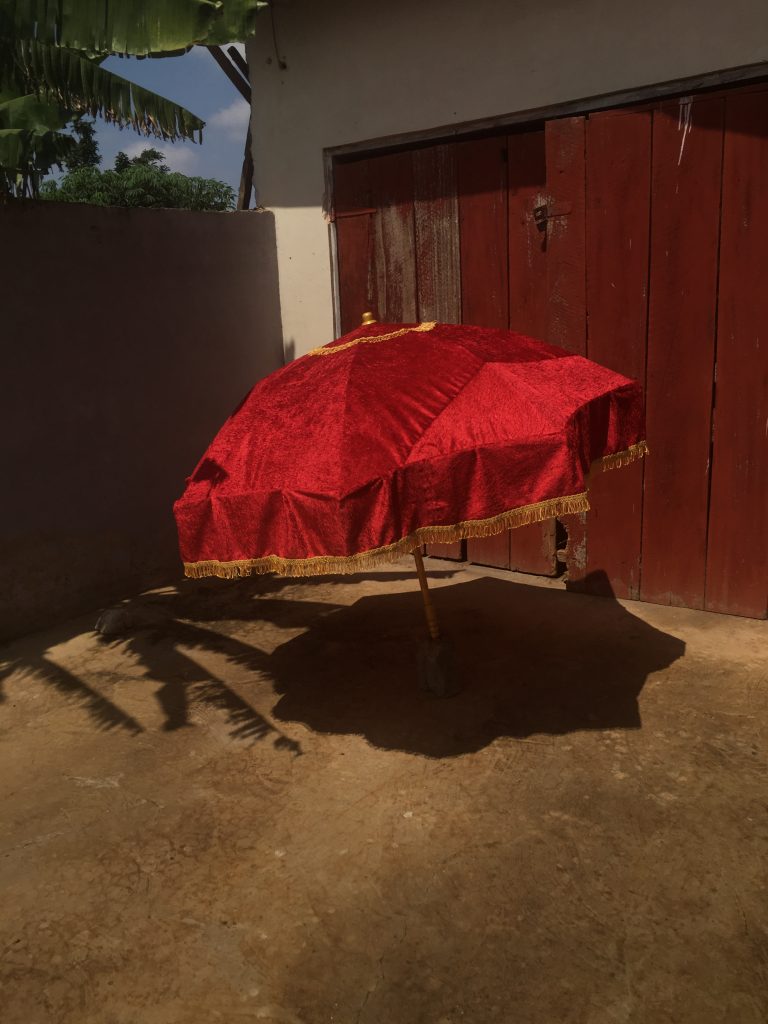
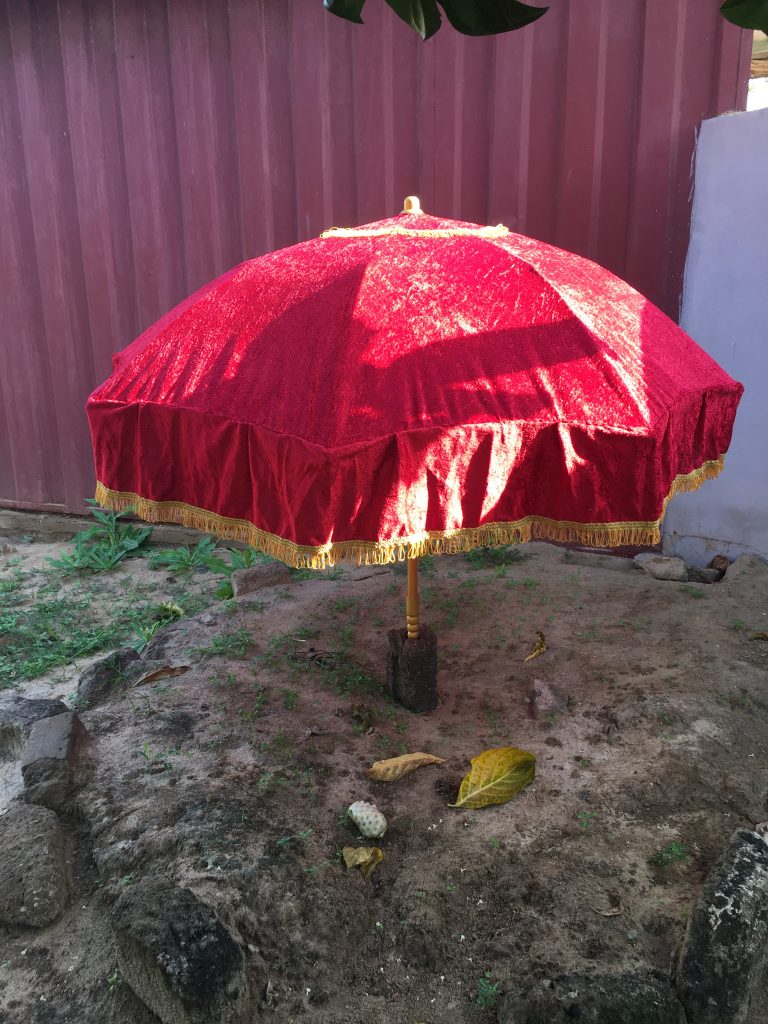
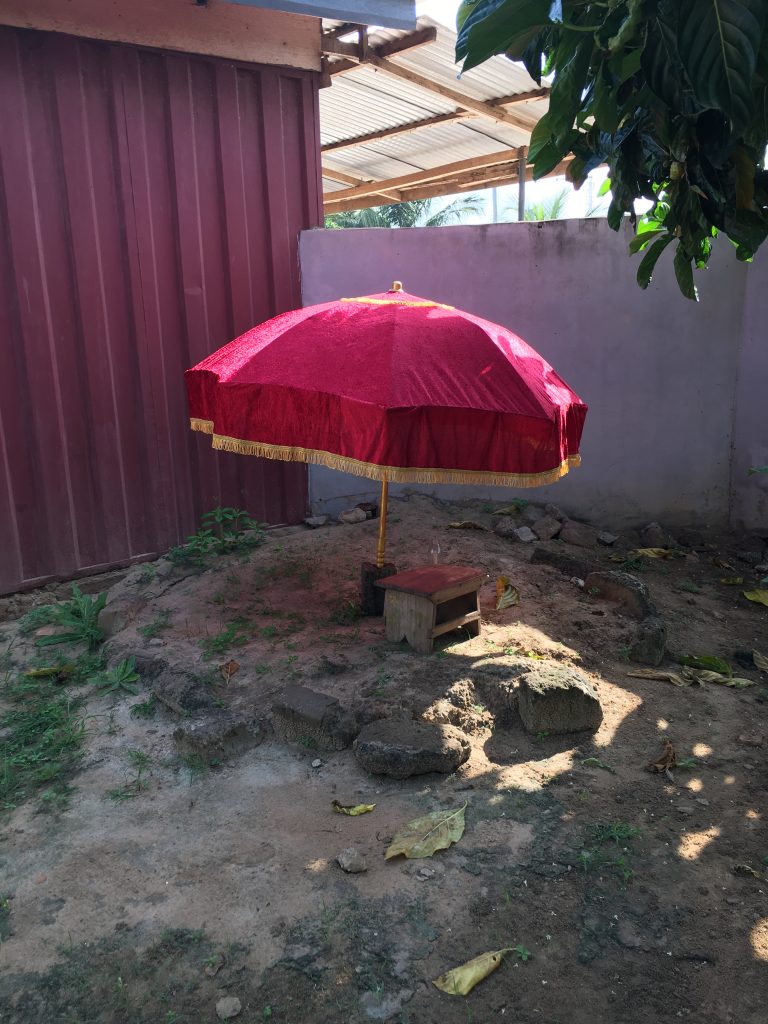
I believe that objects can possess spiritual energy. This umbrella is one of them. It is a Ghanaian Royal Umbrella and made for the kings and Queens. These are not just for shelter from the west African heat but function as symbolism. The artist designs and collaborates with the King/Queen and enriches it with contemporary and specific symbolism. T
The Royal umbrella is handmade with high-grade materials and depicts royal levels to the public.
I was fortunate to find an artist that makes Royal Ceremony umbrellas. The umbrella I have has the spirit of a Queen Mother. It is red with gold fringing. This spirit is present through the experience of building this shrine.
This week I have been changing this umbrella. I am transforming the umbrella into a shrine for the transgender deity I am envisioning. I will share the images at a later stage.
continuing to sketch > < continuing to sketch
visible roots left in the ground > < follow up for the tree
tabla tabla strings and vocals >
a call to recent studies >
video description: set to another Lollywood classic, this short clip splits the screen into two separate panels. Each one follows the camera movement from dead roots laid in the grass upward to a living tree and then up again to the blue sky – the movement is from grey decay to lush green and blue life. As the intro to the song finishes and the first vocal is about to drop in, the image pauses for a brief moment…two tabla-like images appear side to side. Both are rotating circles with an inner circle of a blackened wood texture, made to appear like the syahi, the central point of the tabla skin. Both rotating circles give the sense of vinyl records being played, with the outer ring on both circles featuring two distinct family images. One is of my two grandfathers sternly sizing each other up. The other is of my grandmother and her best friend sizing up the camera. As the song continues and fades out, the images are taken away by a burning line across the screen.